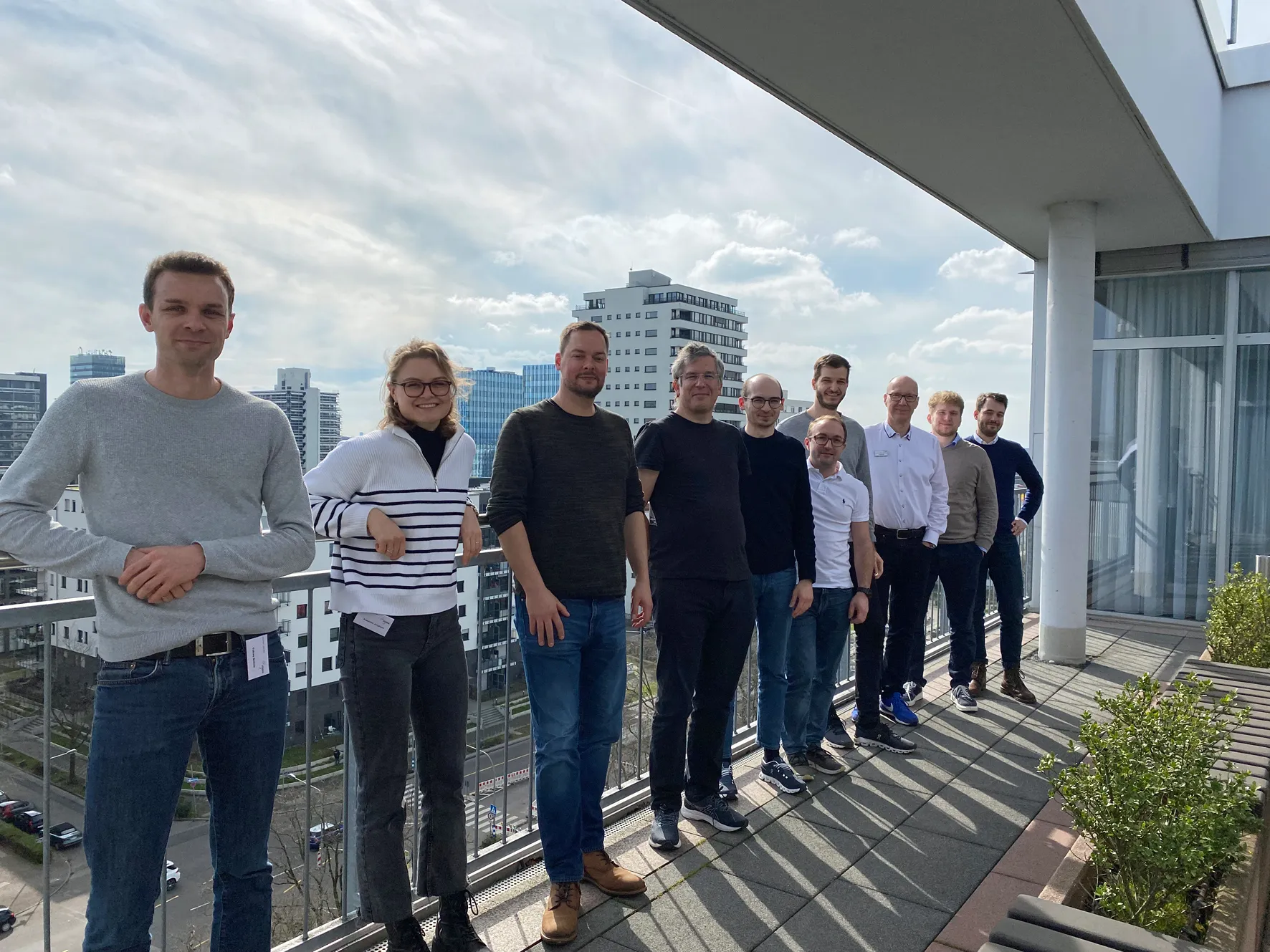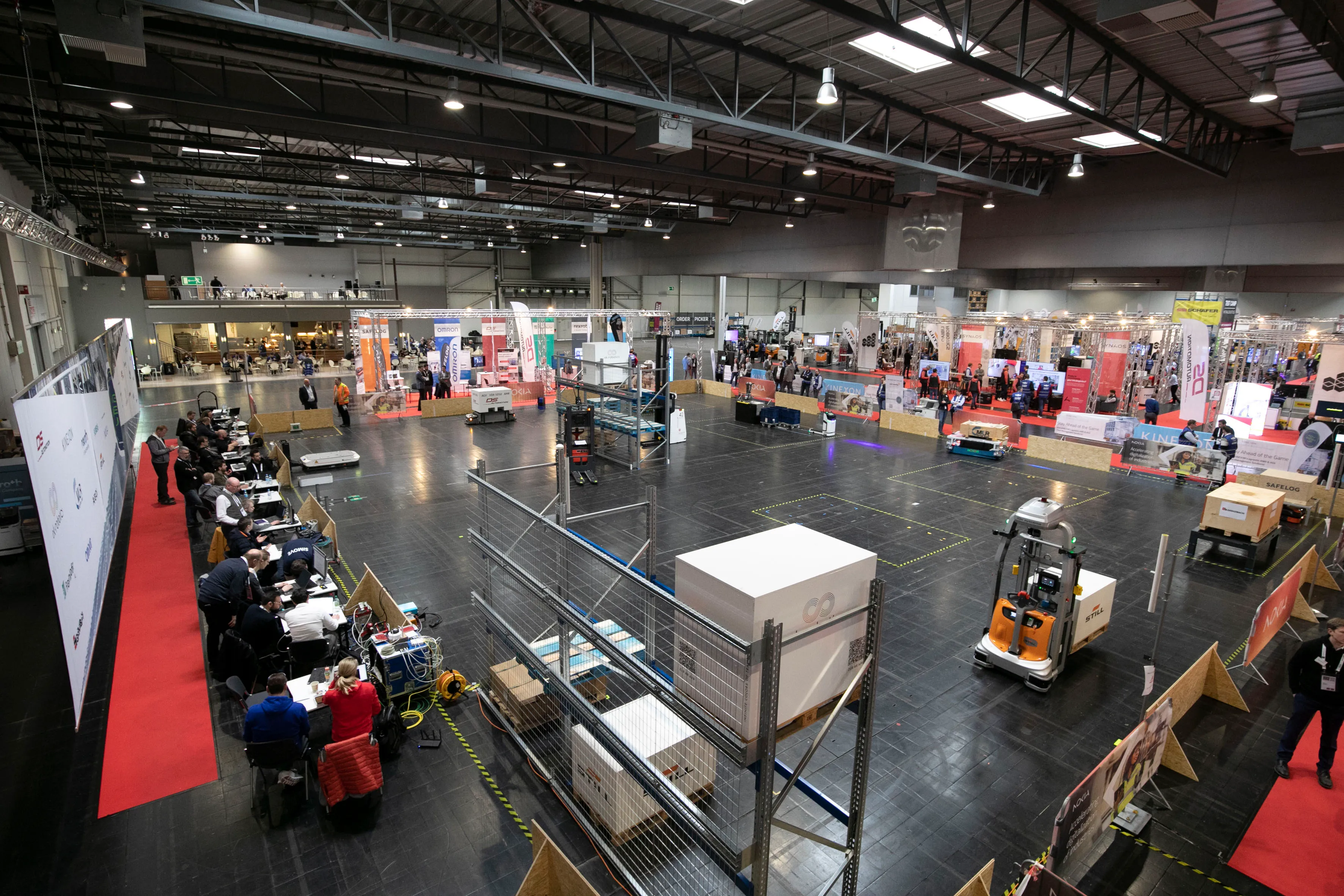VDA 5050: Synergies through interdisciplinary perspectives
Laden Sie unseren Kalender herunter
Schritt 1:
Öffnen Sie Ihren Kalender in Outlook unter https://outlook.office.com/calendar.
Unter Windows können Sie auch Ihr Outlook-Programm nutzen. Die nötigen Schritte weichen dann ggf. leicht ab.
Schritt 2:
Klicken Sie auf Kalender hinzufügen und wählen Sie Aus dem Internet abonnieren.
Schritt 3:
Fügen Sie folgenden Link ein und klicken Sie auf Importieren.
https://outlook.office365.com/owa/calendar/d35c67af88f64628a6018dbceff8877f@synaos.com/8d78e80490b8462db720d7687cbe5c204542545792701501371/calendar.ics
Geschafft! Ab sofort profitieren Sie von unsere Events-Kalender und sind immer über die aktuellsten Intralogistik-Events in 2024 informiert.
Schritt 1:
Öffnen Sie Google Calendar unter http://calendar.google.com.
Schritt 2:
Gehen Sie in die Einstellungen und klicken Sie unter Kalender hinzufügen auf Per URL.
Schritt 3:
Fügen Sie folgenden Link ein und klicken Sie auf Kalender hinzufügen.
https://outlook.office365.com/owa/calendar/d35c67af88f64628a6018dbceff8877f@synaos.com/8d78e80490b8462db720d7687cbe5c204542545792701501371/calendar.ics
Geschafft! Ab sofort profitieren Sie von unsere Events-Kalender und sind immer über die aktuellsten Intralogistik-Events in 2024 informiert.
Wenn Sie kein Outlook oder Google Calendar nutzen, funktioniert das Hinzufügen des Kalenders ggf. etwas anders. Sie können diese allgemeinen Schritte befolgen, um unseren Events-Kalender Ihrem Kalender-Programm hinzuzufügen.
Bei Schwierigkeiten können Sie auch Ihre IT-Abteilung um Hilfe fragen.
Schritt 1:
Öffnen Sie Ihr Kalender-Programm.
Schritt 2:
Navigieren Sie zu der Stelle in Ihrem Programm, an der Sie einen Kalender hinzufügen können. Dies ist häufig in den Einstellungen oder der Menüleiste zu finden.
Schritt 3:
Wählen Sie die Option, bei der Sie einen Kalender aus dem Internet/per URL (oder ähnlich) abonnieren können und fügen Sie an der Stelle folgenden Link ein.
https://outlook.office365.com/owa/calendar/d35c67af88f64628a6018dbceff8877f@synaos.com/8d78e80490b8462db720d7687cbe5c204542545792701501371/calendar.ics
Geschafft! Ab sofort profitieren Sie von unsere Events-Kalender und sind immer über die aktuellsten Intralogistik-Events in 2024 informiert.

Andreas Scherb, technical expert for driverless transport systems at VDMA, over five years of VDA 5050, VDMA member companies as multipliers and a joint path of providers and users.
The VDA 5050 has been in existence for five years now. Before we get into the hard facts, a question first:
What does part 5050 actually mean?Andreas Scherb: It's pure coincidence. The numbers are a sequential number. The VDA numbers its documents by, and 5050 was still available. But it's interesting that you bring that up! Someone asked me the other day: Is that because the VDA and VDMA share the rights to the VDA 5050 in equal shares? No, it's really just a random number.

What is the balance sheet after half a decade of VDA 5050?
AS: The first talks between the VDA and VDMA took place in 2017 and that's when the concrete work began. When you consider the development speed with which the interface was set up and running, from the idea to the first drafts to version 1.0 in 2019, that is very remarkable. And now we've provided proof that it's not just a paper tiger, it actually works. Especially because the brightest minds from two sectors, users and manufacturers, have come together here and really made a difference. I would describe that as a positive result.
There have been very different perspectives on managing heterogeneous fleets, right?
AS: Of course Mobile robot manufacturers and software providers such as SYNAOS met with users from the automotive industry. In the initial talks back then, we discussed a lot and compromises had to be found. This is absolutely normal and desirable when working on standardization. This is known from safety standards.
Is there any specific learning? What would you have done differently back then with today's knowledge?
AS: Perhaps, based on the current state of knowledge, it would have been possible to exchange ideas even more intensively about other programming languages in advance. In the meantime, several open source languages have established themselves on the market that are future-proof. At the start of the project, we were looking for a programming language that would still exist in ten to 15 years. Of course, we had no idea that so much would happen here in the last five years. But with MQTT as a coding language and JSON as a serialization format, everyone gets along really well. Both are among the most common formats. Nevertheless, it was important to incorporate restrictions and adversities that operators have with regard to coding languages in some places into our considerations. The programmers in the VDA and VDMA working groups saw the greatest potential in JSON format with MQTT. The two associations and their members, including SYNAOS, then decided together.
There are VDA 5050 working groups that are driving forward the development and optimization of the interface. Are there any other constellations?
AS: On the public side for everyone, there is the GitHub 5050. Here, anyone in the world can upload their topics and questions to the interface. that github is supervised by the Karlsruhe Institute of Technology at the University of Karlsruhe (KIT), Institute of Conveyor Technology and Logistics. Scientific staff answer the questions or contribute more complex topics and questions to the working groups. At that time, following a call for tenders, KIT was commissioned by both associations to work for us as an extended workbench, so to speak. Then there is a core team to which both associations send company representatives. This team usually meets virtually every four weeks, moderated by KIT, discusses questions from GitHub, among other things, and makes suggestions for further development. This often even results in concrete further developments, which are then approved by the VDA and VDMA working groups at the end. And finally, of course, the questioner receives an answer.
Why does the core team exist in addition to the two working groups?
AS: Since experts from both associations are represented, we have a balanced discussion. The mix of perspectives makes the difference. These operator glasses are needed so that there are no snags in the company afterwards. And at the same time, a manufacturer's perspective with project expertise is needed.

“It's the mix of perspectives that counts. We need these operator glasses so that there are no snags in the company afterwards. And at the same time, a manufacturer's perspective with project expertise is needed.”
What specific development initiatives are planned with the VDA 5050?
AS: In the future, the system should also be opened up more and more to other mobile robots. Back then, we started with a certain level of technology that was dominated by AGV. In the short and medium term, we will address the topics of corridors and zones and thus enable autonomous vehicles to navigate freely within a certain framework. For example, on the right and left corridors, there are virtual guardrails within which a vehicle can move. But this feature will be optional.
In addition, the mobile robots should be notified that they can drive past a waypoint with a certain tolerance of, for example, half a meter. But it is important for us to complete this integration step by step. We want to describe these changes and innovations properly and avoid errors that would otherwise have to be laboriously corrected.
Another important issue is backwards compatibility. We now have versions 1.0, 1.1, and 2.0.0. Users and operators have reflected to us that they attach great importance to backwards compatibility. However, if version 3.0.0 is available at some point, it is important that the previous versions can also be used. This is an important signal to the market and increases acceptance.
And finally, the topic of integration of peripheral devices will also come into focus. We know that this topic concerns many warehouse operators and want to help them through the consortium Intralogistics-2X give you the opportunity to get actively involved here.
The VDA 5050 is still often perceived as a communication interface for the automotive industry. How do you polish up this image so that the standard is also noticed outside the automotive sector?
AS: We're doing a lot for that. With our annually organized AGV mesh up We are creating a special test setting in which we repeatedly prove the performance and maturity of the VDA 5050. This is where we and our VDMA member companies let action speak for themselves. The AGV mesh-up can be seen again this year as part of TEST CAMP INTRALOGISTICS in Dortmund for logistics experts from many industries. We see that the VDA 5050 is also increasingly a requirement in tenders in other industries. We are now receiving inquiries about the VDA 5050 from Asia and the first companies are rolling out the VDA 5050 to their plants worldwide. In doing so, they take on a multiplier role, so to speak.
The basic understanding of VDA 5050 is therefore growing in other industries. And that even far beyond the borders of Europe!

In your opinion, does industry even need a global communication standard for mobile robots? Stand Mass Robotics in the USA and Open-RMF in direct competition with the VDA 5050 in Southeast Asia?
AS: One thing in advance: We should always use the term standard Handle carefully. Yes, this is a certain communication model. But when it comes to standards, many think of strict safety standards and binding requirements. The VDA 5050 is a possible communication interface that is available to manufacturers and users for their projects. We don't see competition with other options, such as Mass Robotics or Open-RMF, also because they are oriented differently.
With Mass Robotics and Open-RMF Can you establish a control body via the master control system, a middleware, so to speak, and you can then communicate not only with the robot fleet, but also with other master control systems and WMS or ERP systems. With the VDA 5050, on the other hand, heterogeneous vehicle fleets from different manufacturers can be controlled via a central fleet manager. The big advantage is that the proprietary robot software does not have to be controlled individually. This is where the biggest difference lies: Mass Robotics As a control body, maps the individual control systems of the various robots that run in parallel during operation. With the VDA 5050, we are deliberately moving away from the various master controls towards a single, central master control.
I do not think the question of whether the world urgently needs a single mobile robot standard is irrelevant. In some places in less complex scenarios, there may be no need for such a standard. And yet it works. The much more important question that intralogistics managers should ask themselves is: How do I digitize and automate my intralogistics processes? And then I think about a solid strategy.
So VDA 5050 won't and doesn't have to be an export hit?
AS: It was good and right that a specific need in an important intralogistics customer sector resulted in an open source component that is now available to everyone and is also being further developed. This also applies, for example, to every vehicle with its type of navigation, from following glued lines to the high-tech variant SLAM. Above all, you have to honestly discuss with project participants what they need to make their intralogistics processes efficient. Perhaps another system works better for them than the VDA 5050? We always have to look at the highly individual application on site and what you really need for your processes.
Success depends on practicality and this decision is made in the market. The first robotics manufacturers outside Europe are taking action with the VDA 5050. On the user side, the interface with the foreign locations of some companies is migrating. Internationalization is therefore already underway.
Thank you very much for the interview, Mr. Scherb.
Schließen Sie sich 1.000+ Intralogistik-Insidern an, die Insights direkt per E-Mail erhalten.

